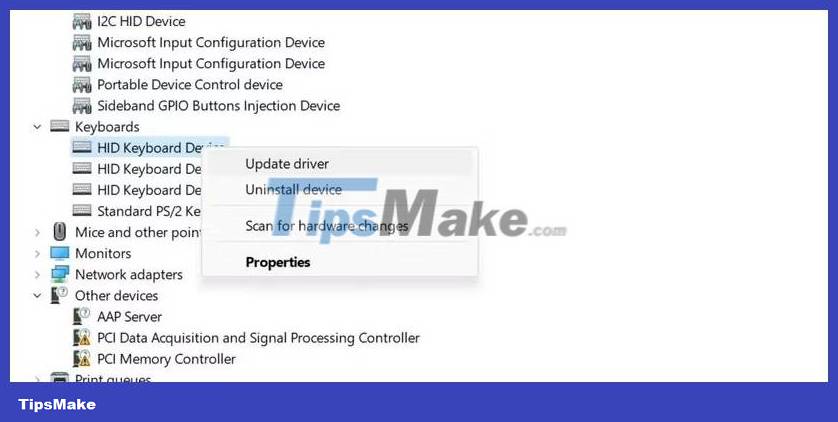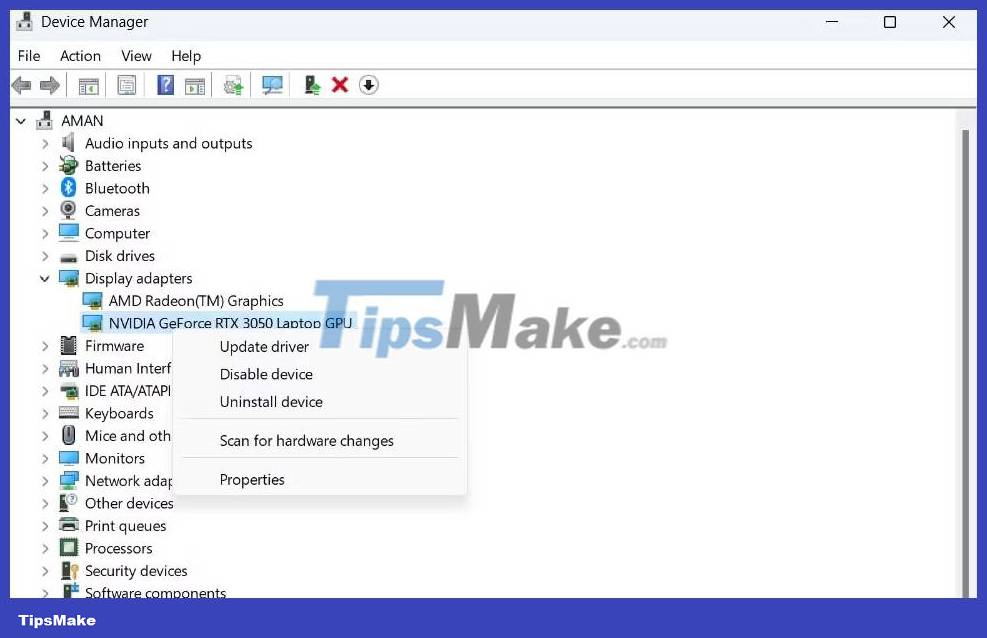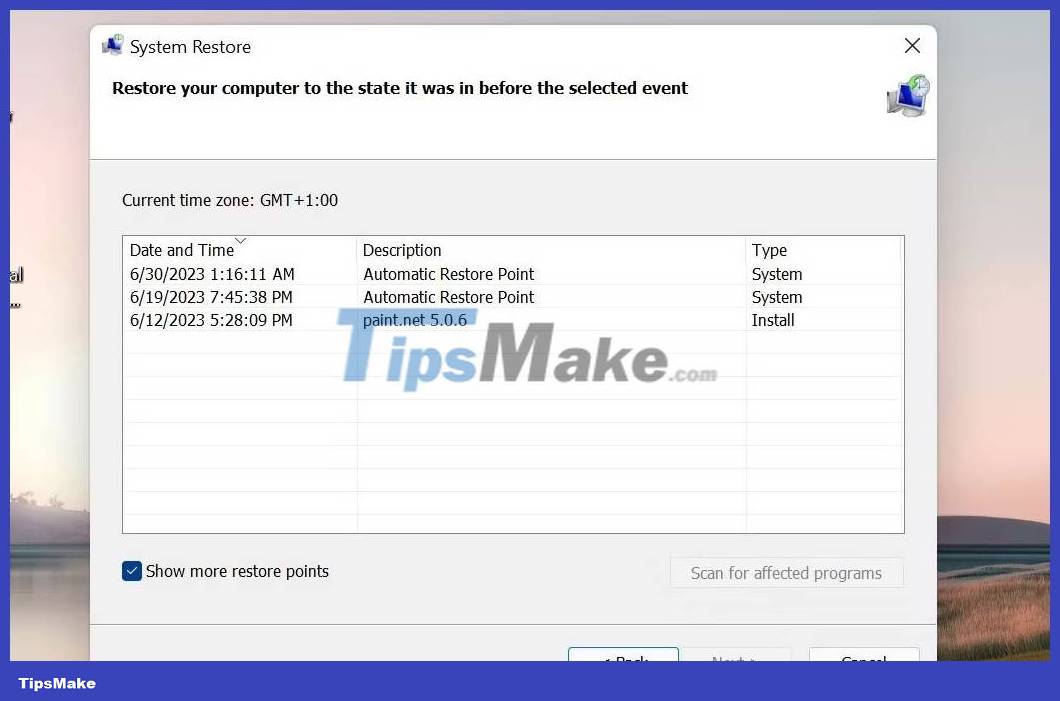What is ftdibus.sys on Windows? Why does it disable Memory Integrity?
You may have encountered strange files and programs on your Windows system, such as "ftdibus.sys", which usually works quietly in the background but sometimes causes system crashes.
The following article will explore the identity and role of "ftdibus.sys" and provide instructions on how to resolve any problems it may cause in your system.
Learn about the file "ftdibus.sys"
In Windows, "ftdibus.sys" is the system file of the FTDI USB driver, especially for FTDI (Future Technology Devices International) USB devices. It helps ensure the normal operation of USB FTDI devices on Windows operating systems by allowing the system to communicate and control FTDI devices.
If you have a device that uses the "ftdibus.sys" driver, you may encounter the error "Memory integrity cannot be turned on due to ftdibus.sys" when you try to enable Memory Integrity in Windows settings. This means that the driver is not compatible with Memory Integrity and may cause it to function properly.
If you're facing this particular problem, the fixes below will get you back on track in no time.
How to fix "Memory integrity cannot be turned on due to ftdibus.sys" error
1. Update FTDI driver
Many users have difficulty enabling Memory Integrity due to outdated FTDI drivers on their systems. This happens because these drivers, when outdated or damaged, are not fully compatible with the latest versions of Windows and their security features, including Memory Integrity.
To solve these driver-related problems, the simplest solution is to update the drivers to their latest versions. This can be done through the built-in Windows Update feature or through Device Manager.
Here's how:
1. Press the key combination Win + S to open the Search utility.
2. Enter "Device Manager" in the field and click Open .
3. In the next window, find the targeted driver and right-click on them. In some cases, you may see a yellow exclamation mark associated with the driver, which indicates that the driver is damaged or needs to be updated.
4. Select Update driver from the context menu.

5. Now, select Search automatically for drivers and let the utility scan for any updated driver versions on the system. If found, you can proceed to follow the on-screen instructions to install it.
6. If the latest available version is installed, you can click Search for updated drivers on Windows Update and see if that helps. You can also access the Settings app to install the latest driver updates.
Another way to get the latest drivers available on your system is to visit the manufacturer's website (in this case Future Technology Devices International) and search for the latest driver versions there.
If you find a suitable version, click on it to download to the system. Then, repeat steps 1-4 that the article listed above and this time, select Browse my computer for drivers . Now, you can go to the new driver download location and install it manually by following the on-screen instructions.
2. Disable the driver
If updating the driver doesn't work, you can try turning it off temporarily. However, it is important to note that this may affect the functionality of the hardware involved, rendering it unusable.
Furthermore, this may not completely resolve the root cause of the problem, so we recommend that you only continue with this method if nothing else works and you need to access the feature. Memory Integrity is immediate.
Follow these steps to continue:
1. Launch Device Manager as described above.
2. Right-click on the targeted driver and select Disable device from the context menu.

3. Confirm your action in the next prompt. You may need admin access to the system to do this.
After disabling the driver, try re-enabling Memory Integrity. You can reactivate the driver by following the same steps once the problem is resolved.
In case you do not need the driver on your system, it is best to uninstall it. To do that, right-click the driver in Device Manager and select Uninstall device . Follow the on-screen prompts to complete the process and perform a system reboot to finalize the changes.
3. Restore the system

If you suspect that recent changes to your system may have caused this problem, you have the option of using Windows' built-in system recovery tool to undo those changes.
This tool periodically creates restore points on your system, allowing you to return your system to the state it was in before that restore point was created. This can be an effective method to resolve issues related to recent system changes.
4. Force enable Memory Integrity
While there are some simple methods to resolve any issue preventing you from enabling Memory Integrity in Windows, you can make specific adjustments in the Registry Editor to enable Memory Integrity in Windows.
If you decide to continue with this method, the article recommends that you create a registry backup for safety. Once done, enable Memory Integrity in Windows.
5. Contact FTDI support
Finally, if none of the solutions help, you should contact the official FTDI support and report the issue to them. Hopefully they will be able to suggest you a fix.
You can also seek help from Microsoft's support team using the "Get Help" app included with Windows or visit Bing Chat for AI-guided support.
You should read it
- Why shouldn't you disable the System Integrity Protection feature on the Mac?
- How to fix BSOD Memory Management error
- How to fix Network discovery is turned off error on Windows 10
- How to handle a computer error message Your computer is low on memory on Windows
- How to Fix USB error or SD memory card error
- Instructions to repair game files on different launchers
- How to fix 'This Website Is Using Significant Memory' error on Mac
- Instructions for installing Tails on Windows
May be interested
- Steps to disable Print Spooler on Windows 10
 print spooler is software built into the windows operating system that temporarily stores print jobs in the computer's memory until the printer is ready to print them.
print spooler is software built into the windows operating system that temporarily stores print jobs in the computer's memory until the printer is ready to print them. - Disable Windows 10 keyboard in 5 simple ways
 for some reason you want to disable the keyboard on your windows computer. for example, you are watching an episode and you do not want someone to accidentally press the button on the keyboard and reload from scratch or reuse it. you can then disable the keyboard on your windows computer.
for some reason you want to disable the keyboard on your windows computer. for example, you are watching an episode and you do not want someone to accidentally press the button on the keyboard and reload from scratch or reuse it. you can then disable the keyboard on your windows computer. - How to handle a computer error message Your computer is low on memory on Windows
 you are using the computer, the screen suddenly appears your computer is low on memory error message, along with the applications that you are opening will be closed. even if you reboot the machine, it still can't be fixed, because this is a memory error.
you are using the computer, the screen suddenly appears your computer is low on memory error message, along with the applications that you are opening will be closed. even if you reboot the machine, it still can't be fixed, because this is a memory error. - How to determine if computer memory has a problem?
 a bad memory can cause a lot of different problems on the computer. here are just a few of the many problems you may encounter.
a bad memory can cause a lot of different problems on the computer. here are just a few of the many problems you may encounter. - How to turn off Onedrive, disable and completely remove the Onedrive application on Windows 10
 onedrive is a microsoft utility that allows users to store data in the cloud form. however, not everyone needs to use it, but onedrive also makes your computer slow and use memory. so how do i turn off, disable, or completely remove onedrive on windows 10?
onedrive is a microsoft utility that allows users to store data in the cloud form. however, not everyone needs to use it, but onedrive also makes your computer slow and use memory. so how do i turn off, disable, or completely remove onedrive on windows 10? - 3 How to disable BitLocker in Windows 10
 if bitlocker encryption is causing an unnecessary issue, follow these steps to disable, delete, or disable bitlocker in windows 10.
if bitlocker encryption is causing an unnecessary issue, follow these steps to disable, delete, or disable bitlocker in windows 10. - On Windows 10 you should disable these features
 on windows 10 by default, there are many applications running on the backround. even these applications will run in the background even if you don't open them. these applications can receive information, send notifications, download and install new versions of updates, ... and lead to the situation that your windows 10 laptop battery runs out of battery quickly.
on windows 10 by default, there are many applications running on the backround. even these applications will run in the background even if you don't open them. these applications can receive information, send notifications, download and install new versions of updates, ... and lead to the situation that your windows 10 laptop battery runs out of battery quickly. - How to disable iphlpsvc in Windows 10
 iphlpsvc in windows stands for internet protocol helper service. disabling iphlpsvc will not damage the system, disrupt its general functionality or affect performance much.
iphlpsvc in windows stands for internet protocol helper service. disabling iphlpsvc will not damage the system, disrupt its general functionality or affect performance much. - How to disable keyboard shortcuts and hotkeys on Windows 10
 you are using a windows pc and suddenly press some shortcut by mistake that randomly opens a program or activates a strange feature. even worse, you may have accidentally closed your software programs by accidentally pressing hotkeys.
you are using a windows pc and suddenly press some shortcut by mistake that randomly opens a program or activates a strange feature. even worse, you may have accidentally closed your software programs by accidentally pressing hotkeys. - How to disable USB ports on Windows, Mac and Linux
 now, you know that using a usb storage device on your computer has many potential security risks. if you fear the risk of being infected with malware, such as trojian, keyloggers or ransomware, you should completely disable the usb storage device if the system has a lot of sensitive data.
now, you know that using a usb storage device on your computer has many potential security risks. if you fear the risk of being infected with malware, such as trojian, keyloggers or ransomware, you should completely disable the usb storage device if the system has a lot of sensitive data.










 Instructions on how to fix Windows Camera application problems
Instructions on how to fix Windows Camera application problems CT scan of Apple's Thunderbolt 4 Pro cable shows why it costs $129
CT scan of Apple's Thunderbolt 4 Pro cable shows why it costs $129 YouTube allows users to choose when and what products to advertise
YouTube allows users to choose when and what products to advertise Microsoft's Windows computer security features have had problems over the past 3 years
Microsoft's Windows computer security features have had problems over the past 3 years Baidu launches a new version of Ernie AI that competes with GPT-4
Baidu launches a new version of Ernie AI that competes with GPT-4 X (Twitter) tests an annual fee policy of 1 USD to limit virtual accounts
X (Twitter) tests an annual fee policy of 1 USD to limit virtual accounts